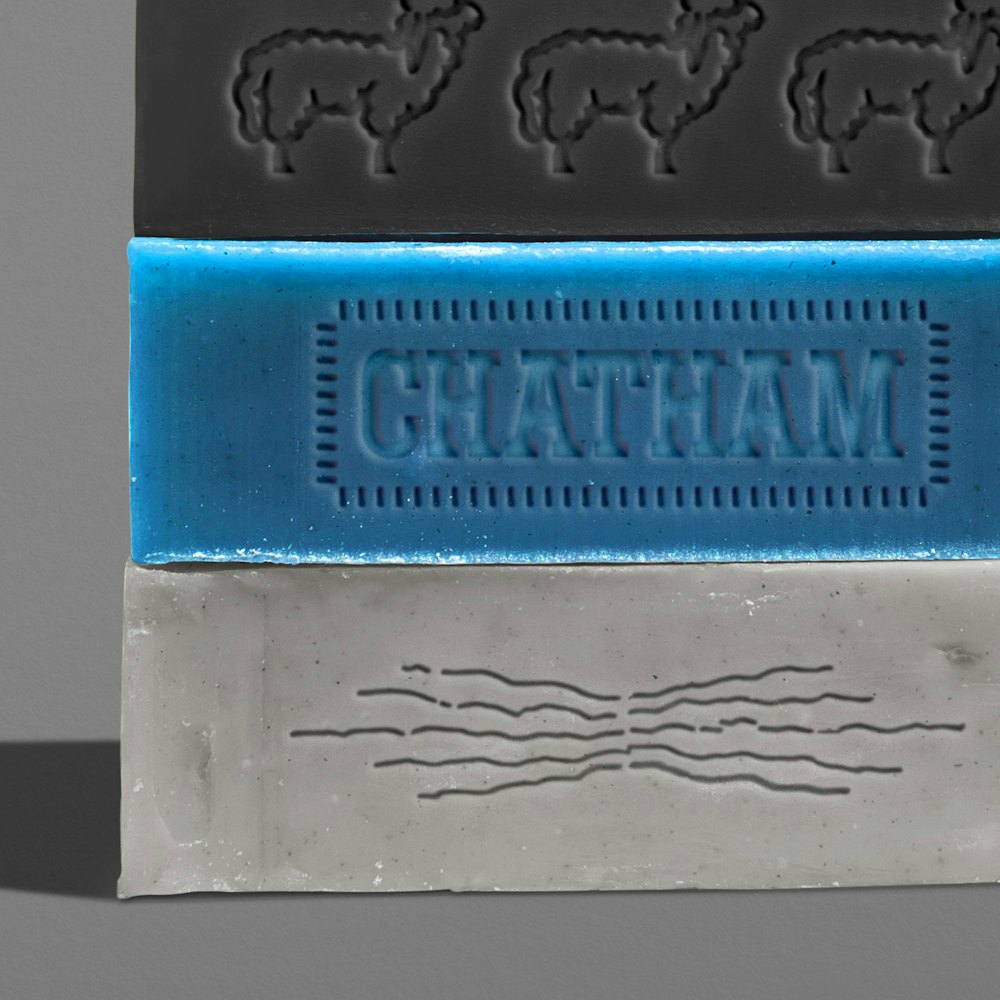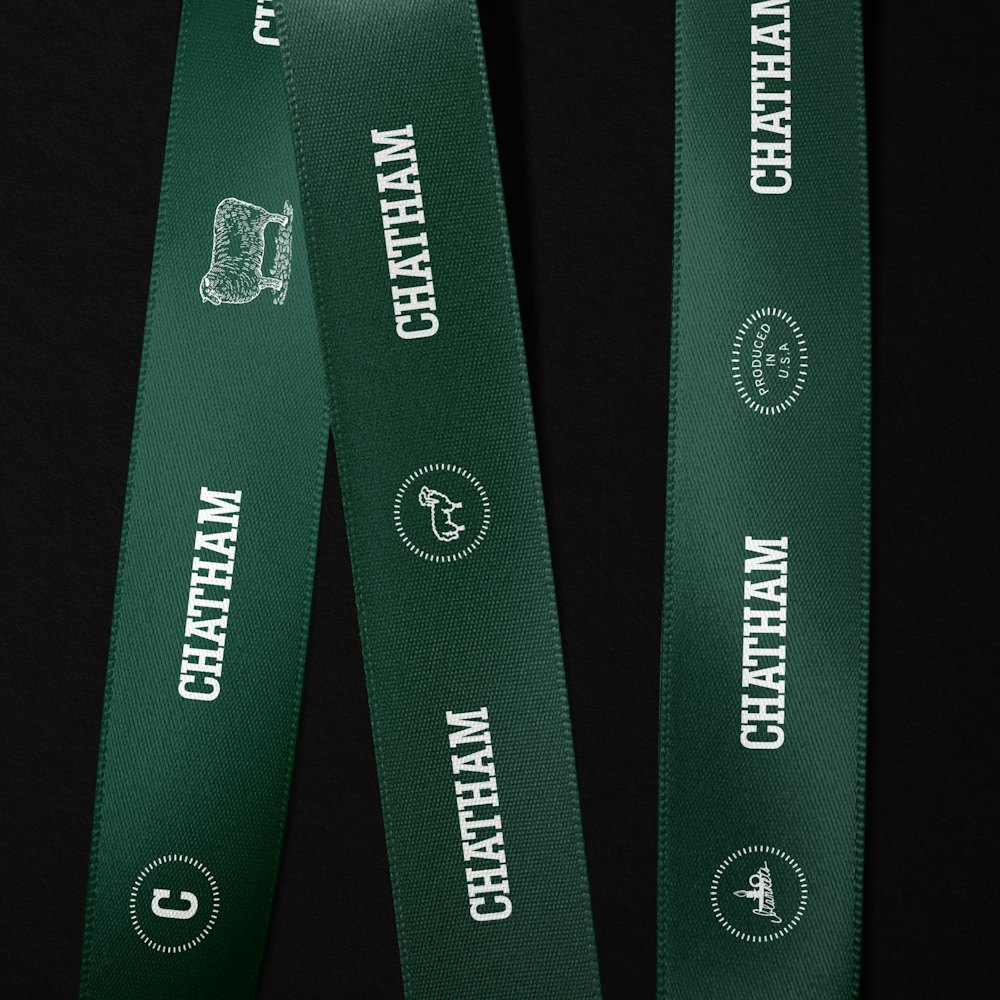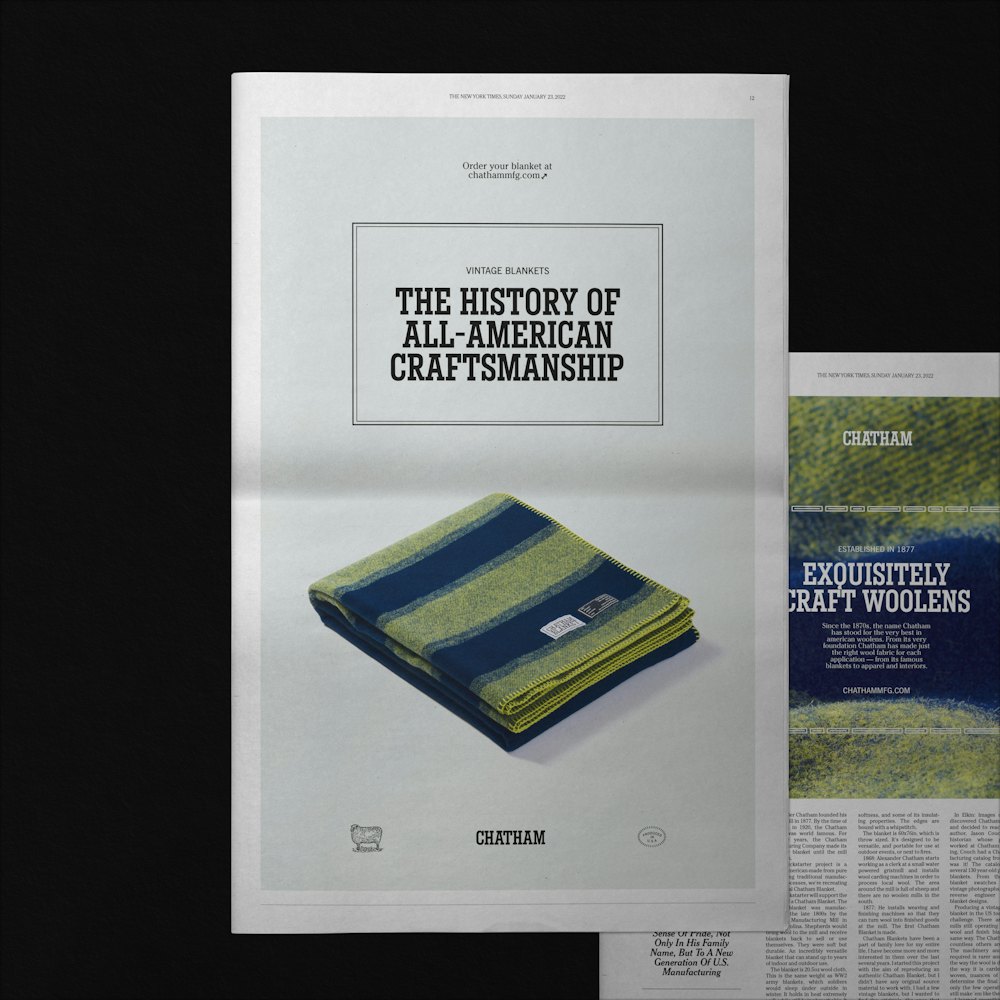

Chatham
Chatham Manufacturing Company is a historic American textile brand that was originally founded in 1877. In 2020, Alex Chatham, great-great-grandson of the original founder, revived the Chatham legacy of U.S. produced, pure-woolen products, starting with the Original Chatham Blanket.
Order worked with Alex to develop a type-driven identity that highlighted the rich layers of Chatham’s history, while reflecting the high-end quality of their contemporary materials.
Collaborators
Project team
Jesse Reed, Partner
Emily Klaebe, Designer
Megan Nardini, Operations
Brooklyn Office
Origins
Alexander Chatham was a merchant, farmer, and industrialist born in Wilkesboro, North Carolina.
Growing up, he apprenticed at his fathers’ foundry and repair shop, where he grew a high degree of skill in mechanics.
In his early 20s, he began a position under Richard Gwyn, who owned a mercantile business, and cotton mill known as Elkin Manufacturing Company.

Founder,
Alexander Chatham
20 Jan. 1834 —
21 Jan. 1920

Following his tenure under Richard Gwyn, Chatham built his own small woolen mill on Big Elkin Creek, called the Chatham Manufacturing Company.
In 1877, the first Chatham blanket is made.
With no woolen mills in the South, and an abundance of sheep, Chatham Manufacturing Co. is an immediate success.
In 1890, Hugh Gwyn Chatham succeeds his father as president of the company. Shortly after, the mill is moved closer to a near by railroad for wider distribution.

Hugh Gwyn Chatham, circa 1890.

The Chatham family home facing Market Street in the heart of Elkin, circa 1898.

The newly established Chatham Mill near the Elkin railroad, 1893.


An original catalogue of blanket, jean, and clothing swatches from 1900 showcases the range of fabric styles and colors crafted by the company at the time.
The blanket design above served as the muse for the Chatham’s revival.


Using carding, weaving, and finishing machines established by Alexandar Chatham, wool can be transformed into finished goods at the mills.



The Chatham mills gave the farmers of Virginia and North Carolina a widely distributed market for their wool, and provided job opportunities for the local community.
The Heart of Elkin
As the Chatham Manufacturing Co. began to further establish its roots throughout North Carolina and surrounding states, inner-company communities began to take shape.

The entire workforce at the Elkin cotton mill in 1907. The photo originally appeared in the company’s “Blanketeer”, courtesy of Etta Darnell.
The cotton mill for many years carded cotton and made cotton warp for the Chatham plant.
A postcard of the historic mill location, circa 1927.


Mandy Burcham, at work in the Chatham mill, circa 1940.

The Elkin communtiy and Chatham shared a symbiotic relationship.

Catherine Whitener Salmons plays for the Chatham Blanketeers in the 1930s and 1940s.


The Chatham Girls’ Basketball Team won the Southern Textile Basketball Tournament in 1938.

The Chatham Manufacturing Company had a semi-pro baseball team that played in a field on company property. They played against other teams owned by mills in North Carolina. In 1937, they played the semi-professional championship in Wichita, Kansas.
As early as the 1920s, Chatham blankets began to be distributed in high-end department stores, becoming a family staple across the country.


The increase of popularity in Chatham’s woolen products resulted in deals with automobile companies, with design lead by textile designer Marianne Strengell.

Marianne Strengell,
Finnish-American
textile designer




Chatham manufactures wool interiors for car brands including Ford, Chrysler, Nash and Studebaker.
Revival
In 1988, Chatham Manufacturing Co. leaves family hands when it is taken over by a Danish holding company and quickly dissolved.
The mill is sold a few times during the next several years and dwindles until it is completely shut down.
Alex Chatham is an industrial designer and great-great-grandson of founder Alexander Chatham.
With a keen interest in his family’s lore and a background in product design, Alex sought to breathe life back into the Chatham legacy. Following a successful crowdfunding campaign, Alex’s work began to reproduce an authentic Chatham blanket.
Chatham approached Order during the blanket’s production phase to create the visual identity.

Alex Chatham inspects samples of the blanket reproduction.
Early on in the research process, Order identified various slab lettering used throughout Chatham’s historic eras.

The strongest usage of the typography was in the original “Chatham Blanket” tag lockup, circa 1940s.
Order sought to develop a type-driven identity, with the foundational typographic expression being the slab lettering used most commonly in the woolen company’s history.



The primary wordmark is restored from 1940s era slab type.



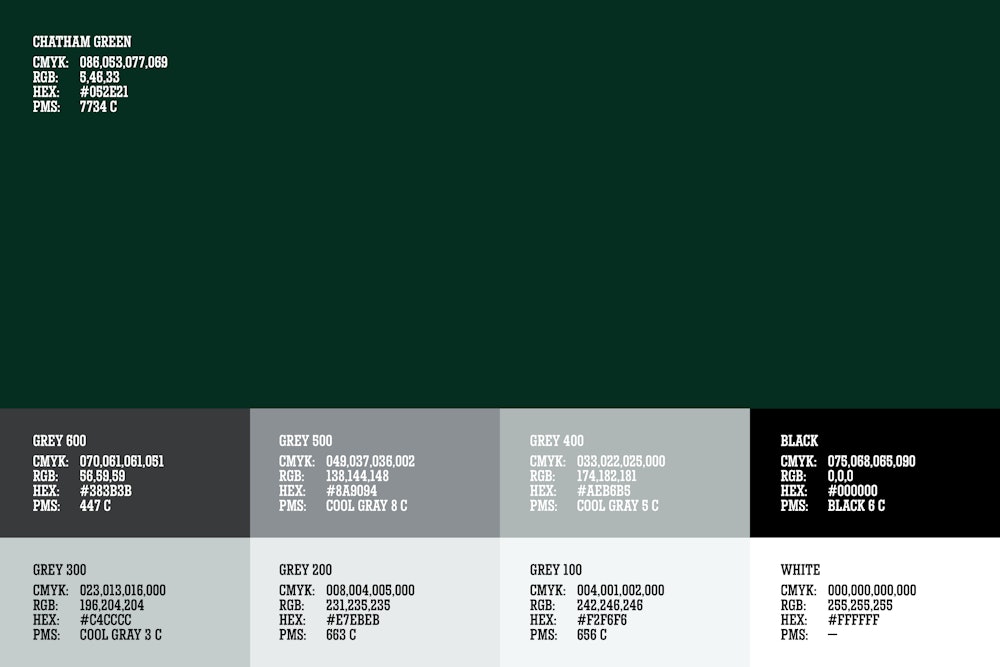
A rich dark green is used as the primary color in the palette, while shades of cool greyscale values act as support.

The Chatham Blanket lockup is used on blanket products exclusively. It has been carefully drawn to contain in a rectangular holding shape, which is best suited for label embroidery.

The Chatham Blanket configuration, used on products only.

The primary wordmark, used most frequently.

The reduced icon, used at smaller scales.
Pulling from Chatham’s history and typographic voice, Order extended the slab lettering used in the wordmark to an extensive, unicase typeface.





The core elements of the original lettering — such as condensed width and thick square serifs — are carried into the revived typeface. Unique characteristics of thick inktraps have been emphasized in subtle joins.


Set in uppercase, Chatham Slab is used for headers across the brand. Extensive punctuation has been drawn for all necessary use cases.
Mastering of Chatham Slab by Robin Mientjes→




The slab traits have been extended to all glyphs.




Chatham’s typographic voice supported the launch of two blankets in 2022. The first blanket to be released was the revival of the Original Chatham Blanket in Elkin Blue Stripe.
Photography by Michael Heeney→









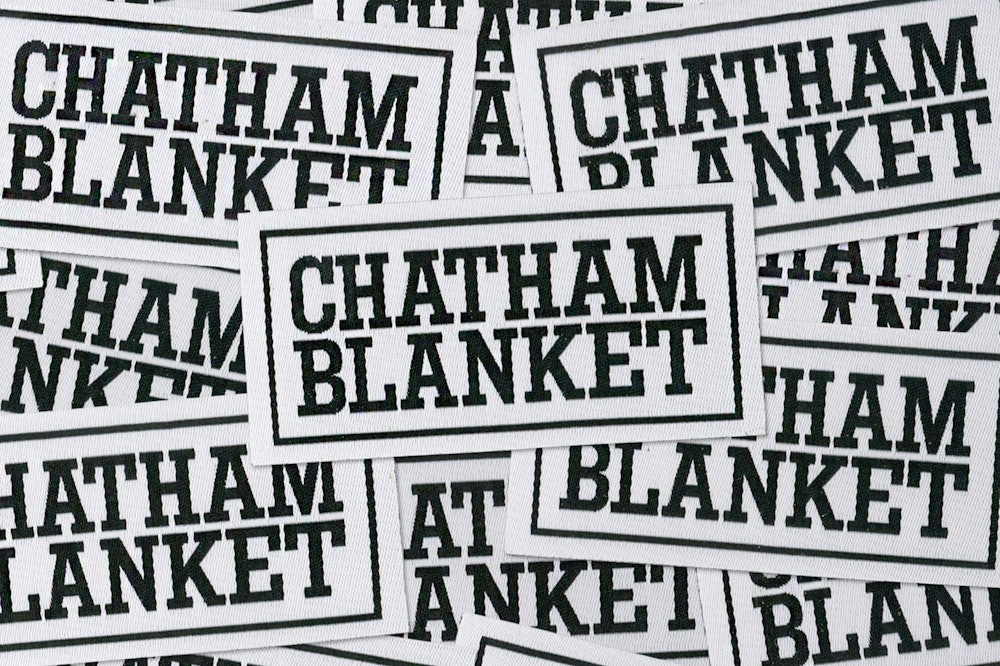
A suite of labels and tags were designed to communicate the blanket’s specifications.


The Chatham Blanket lockup is the primary brand recognition on context of the blanket alone.

The specifications label inverts the color way of the Chatham Blanket label for better distinction.
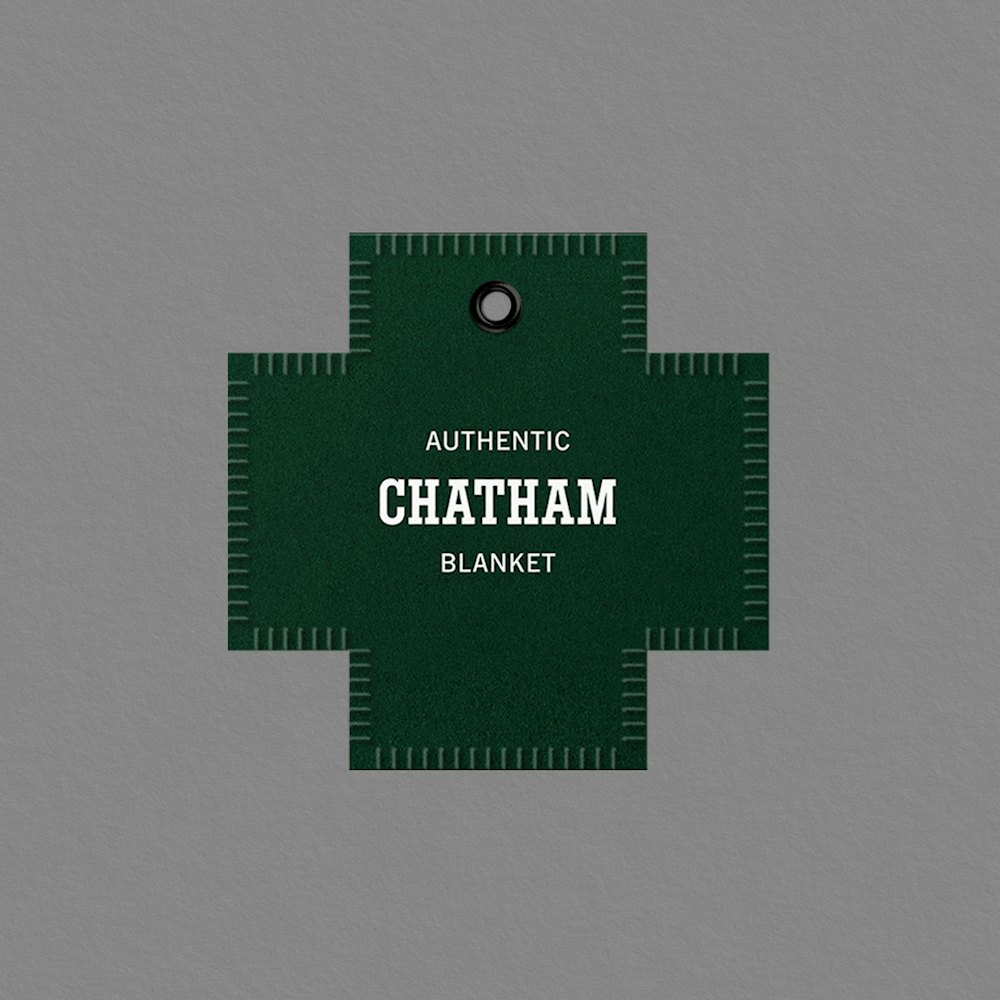
The blanket hang tag. The carrier shape was originally used in the 1950’s as a signifier of hygienic woolens.
The supporting typography of the brand pulled in historical typefaces from Chatham’s past eras.

The Chatham Blanketeer, circa 1933

The Chatham Mill, circa 1930s

A Chatham Catalogue, circa 1900


News Gothic, designed in the early 20th century by Morris Fuller Benton, is used as subheaders throughout the system, mirroring the typography used during Chatham’s founding years.
Cheltenham is a late 19th century typeface, chosen for its likeness to typographic language in Chatham’s paraphernalia.







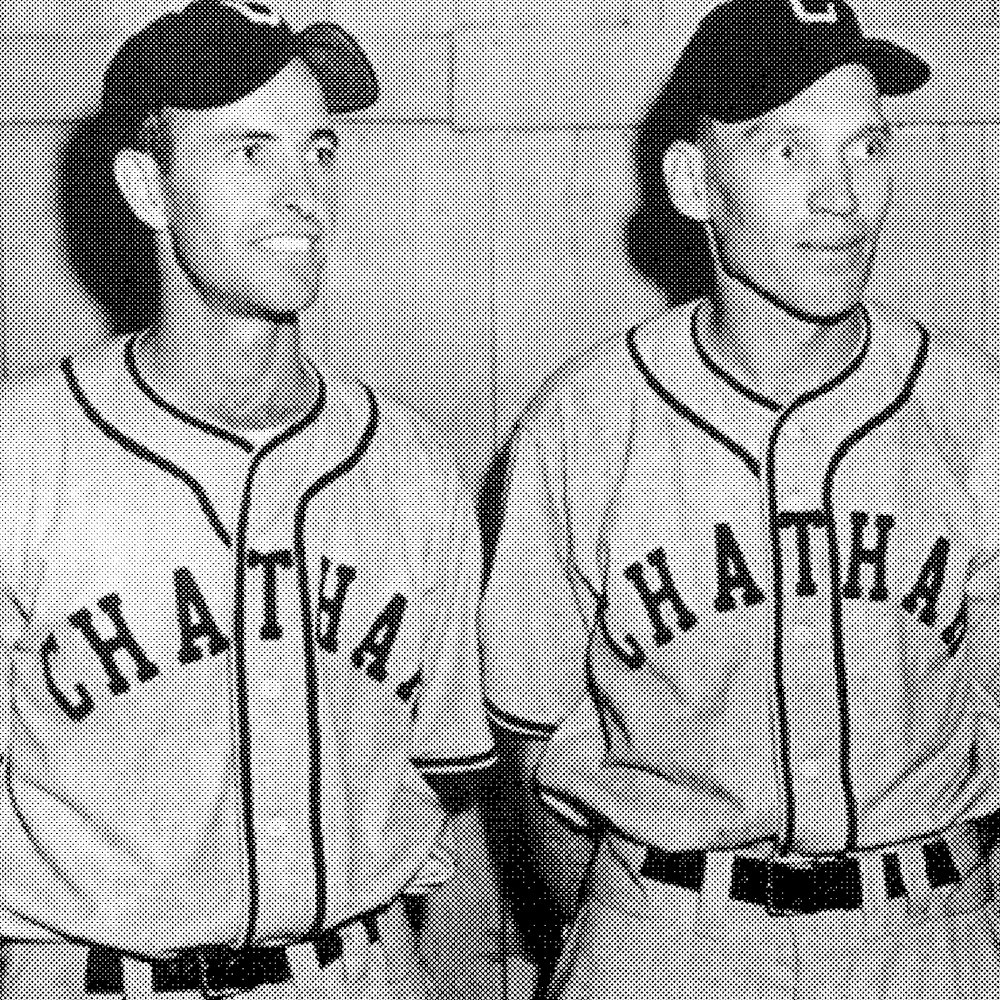
Starting in the 1930s, Chatham had a semi-pro baseball team that played in a field on the company property. Alex sought to authentically recreate the original jerseys and caps used by the players.
The caps and jerseys are made from 100% wool, and hand-sewn by Ebbets Field Flannels→ in the United States.






Chatham Slab’s numerals are featured on the backs of the jersey.

Throughout Chatham’s history is a diverse use of iconography, symbolism, and illustrative devices. Key graphic gems have been redrawn for strategic use both minimally and sparingly in the system.





To coincide with the launch of Chatham’s new brand, Order designed a website that spotlights the high-end products.

A range of the graphic devices are featured prominently on the website, both for historical representation and function. On product pages, they are used to indicate goods made in the United States.
See full site: www.chathammfg.com→



Product modules are designed to respond to various scales.


While slab style typefaces were featured prominently in Chatham’s typographic history, a range of other type expressions were used across the company’s history.
A suite of “C”s pulled from key eras of the Chatham archives have been drawn to be used in the furthest extension of the brand.



The “C”s of Chatham are intended to be used minimally and sparingly, as a subtle nod to the company’s past generations.



Luxury Chatham products are not limited to woolen materials: sheep’s milk soaps are considered limited edition goods.
